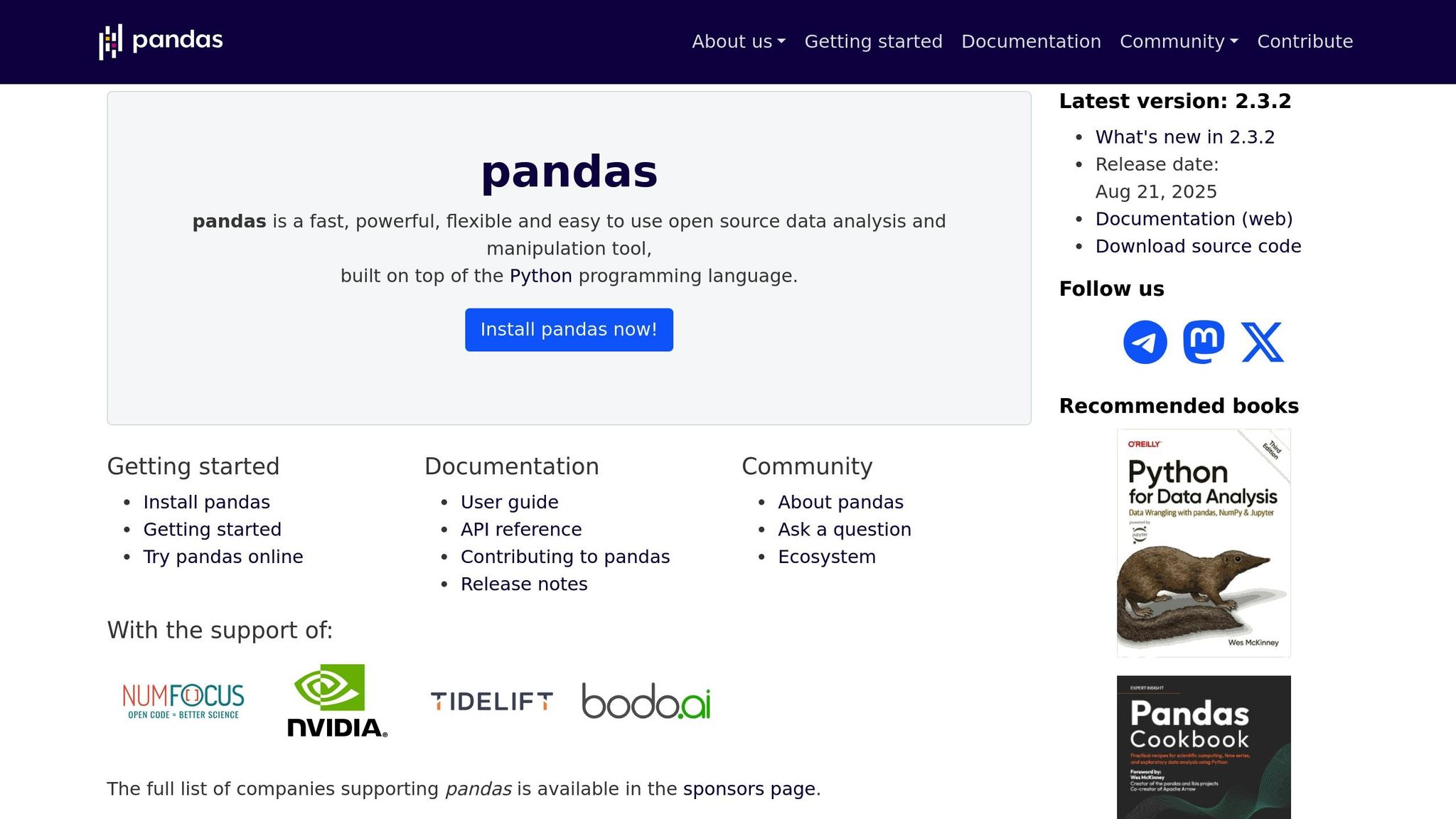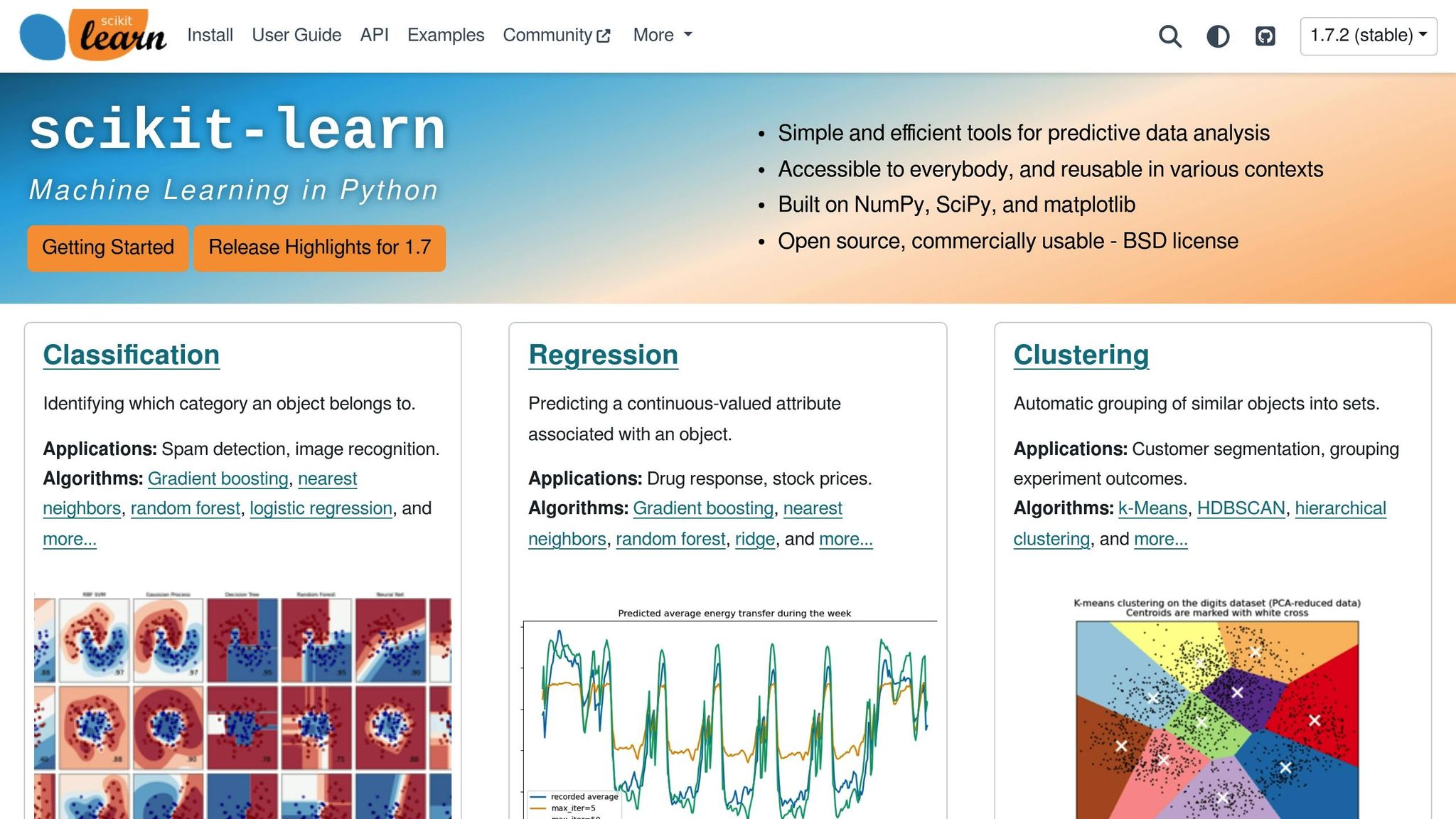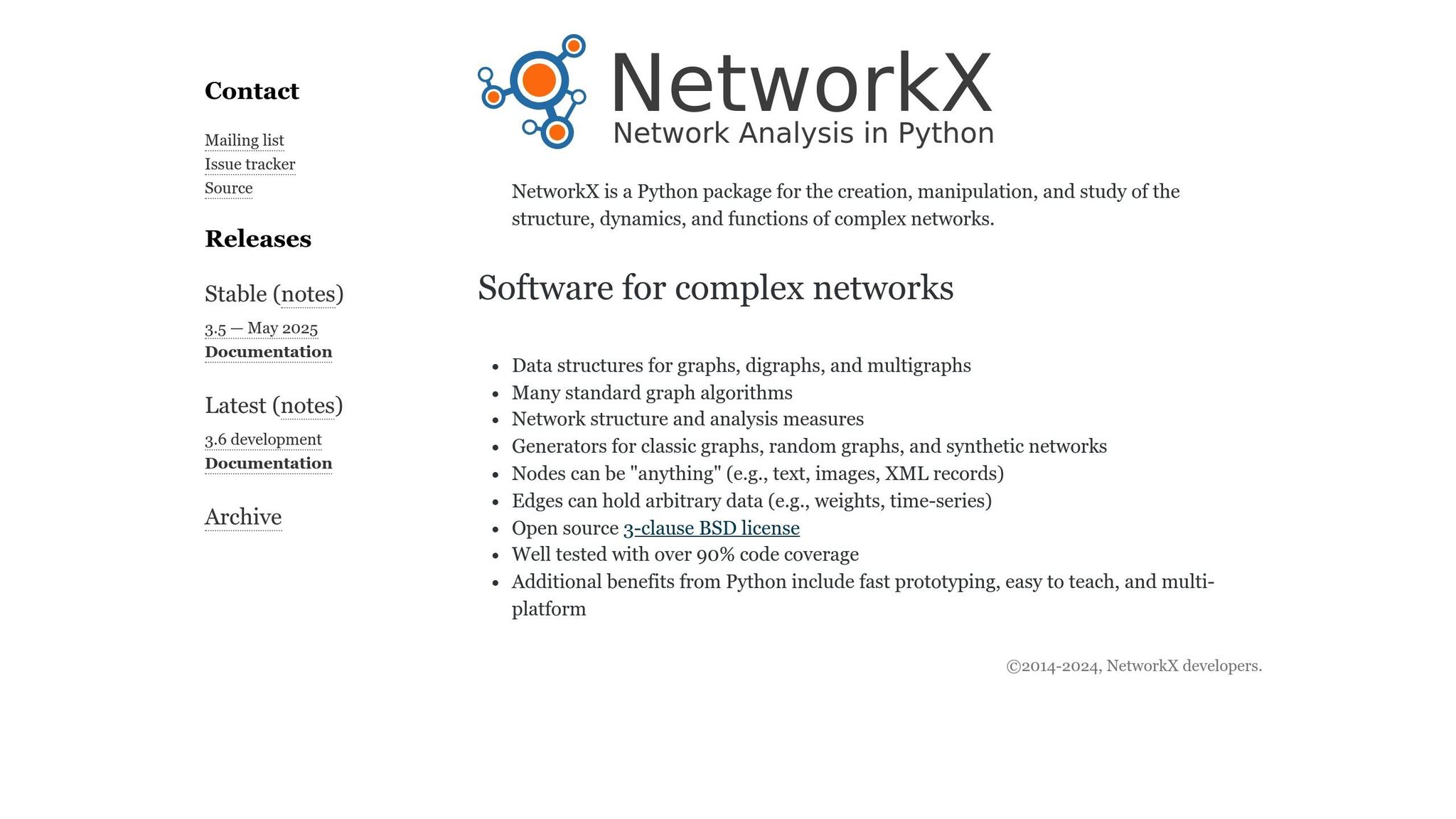Marketers often struggle to track customer journeys across platforms like Google Ads, Facebook, and email campaigns. Traditional attribution models, such as first or last touch, fail to reflect the complexity of modern customer behavior. Python offers a powerful solution with tools like Pandas, Scikit-learn, and NetworkX to handle data processing, predictive modeling, and visualization.
Key Takeaways:
- Pandas: Simplifies data integration and cleaning from multiple platforms, making datasets ready for analysis.
- Scikit-learn: Provides machine learning algorithms to evaluate and model channel contributions to conversions.
- NetworkX: Visualizes customer journeys as graphs, helping identify critical touchpoints and transitions.
These libraries, when used together, can help marketers analyze, model, and present multi-touch attribution data effectively. By combining their strengths, you can gain a clearer understanding of how each channel impacts conversions.
Nicolas & Ken, BlaBlaCar - Implementing a Markov Chains based Multi Touch Attribution Model
1. Pandas

Pandas is a cornerstone tool for cross-platform attribution modeling, making it easier to process and unify marketing data from a variety of sources. Whether you're working with data from Google Ads, Facebook campaigns, email marketing tools, or website analytics, each platform comes with its own quirks - different formats, naming conventions, and structures. Pandas helps you transform all this scattered data into a single, cohesive format that's ready for analysis.
One of Pandas' key strengths is its ability to import data from multiple file types, like CSV, JSON, Excel, or even databases like SQL. This versatility allows you to pull in touchpoint data from various platforms and merge it into a single, structured DataFrame, making cross-platform analysis much more manageable.
Cleaning data is often a headache, but Pandas simplifies the process with its built-in tools. Marketing data can be messy - think inconsistent timestamp formats, campaign names with random capitalization, or missing values. With functions like pd.to_datetime() to standardize date and time fields and .str.lower() to make text data uniform, you can clean up your dataset quickly and ensure it's reliable for further analysis.
Another standout feature is sessionization, which is crucial for attribution modeling. Customer journeys don’t arrive neatly bundled; you need to piece them together from individual touchpoints. Using Pandas, you can calculate time differences between interactions and flag new sessions when a gap exceeds a specified threshold. For example:
df['time_diff'] = df.groupby('user_id')['timestamp'].diff()
df['new_session'] = df['time_diff'] > pd.Timedelta(minutes=30)
This helps you separate new customer journeys from ongoing interactions, giving you a clearer picture of user behavior.
Pandas also makes it easy to handle outliers and missing data. For instance, you can use quantile-based methods to spot unusual values in key metrics. Missing entries can be identified with df.isnull().sum() and addressed by either removing incomplete records using df.dropna() or filling gaps with methods like forward filling (df.fillna(method='ffill')).
If you're working with machine learning models, Pandas offers tools like pandas.get_dummies() for one-hot encoding, which converts categorical variables into a format that's compatible with algorithms in libraries like Scikit-learn. This step is essential for preparing clean, structured data that serves as input for predictive analysis.
Finally, Pandas integrates seamlessly with other Python libraries, making it a powerful ally for ongoing attribution analysis. For example, you can use rolling windows to monitor performance drift in your models and retrain them with fresh data. This ensures your attribution models stay aligned with changing customer behaviors and campaign dynamics, keeping your insights relevant and actionable.
2. Scikit-learn

Scikit-learn transforms cleaned Pandas data into actionable insights by quantifying how much each channel contributes to conversions. After preparing data with Pandas, Scikit-learn steps in to model and validate these contributions effectively.
One of Scikit-learn's strengths lies in its preprocessing tools, which help standardize marketing data that often comes in varying scales. For example, advertising spend might range widely, while engagement rates stay within a tighter band. The StandardScaler adjusts features to have a zero mean and unit variance, ensuring consistent scaling across variables. If you need to compress features into a 0–1 range, the MinMaxScaler is a great choice. Meanwhile, the RobustScaler works well for minimizing the impact of outliers.
Xiaoting Kuang highlighted how Scikit-learn's models - like LogisticRegression, Random Forest, and Gradient Boosting - can quantify channel contributions while accounting for complex interactions. For instance, logistic regression achieved 89.50% accuracy on a simulated dataset, with coefficients normalized to sum to 1.0, making it easier to interpret channel contributions. On the other hand, ensemble methods such as Random Forest and Gradient Boosting excel at capturing the synergies between different channels.
One of the best things about Scikit-learn is its unified API across various algorithms. Whether you're using logistic regression, random forests, or gradient boosting machines, you can rely on the same methods - .fit(), .predict(), and .score() - to train, test, and evaluate your models. This consistency simplifies experimentation and helps you quickly identify which approach works best for your attribution challenges.
To ensure reliable results, Scikit-learn provides robust tools like cross_val_score() and GridSearchCV. Use cross_val_score() to check how well your model generalizes beyond the training data, or apply GridSearchCV to fine-tune hyperparameters and get the most out of your model.
For ongoing attribution analysis, Scikit-learn integrates seamlessly with Python workflows. You can retrain models as new campaign data comes in, track performance over time, and even build ensemble models that combine multiple approaches for deeper insights. This adaptability ensures your attribution models stay aligned with your evolving marketing strategies and shifting customer behaviors.
sbb-itb-89b8f36
3. NetworkX

After preparing your data and building predictive models, the next step is to visualize customer journeys effectively. This is where NetworkX shines. It maps customer journeys as directed graphs (DiGraph), where each node represents a touchpoint, and each edge shows the transition between those touchpoints. This method helps you clearly see the sequential flow of interactions across various marketing channels.
With NetworkX, you can customize node and edge attributes and calculate network metrics like centrality and community detection. These metrics help identify which touchpoints are the most influential or critical in the customer journey. By adding this graphical layer to your analysis, you get a more complete understanding of cross-platform attribution.
The visualizations created using NetworkX make it easier to interpret complex interaction data and share insights with stakeholders. By integrating with Matplotlib, you can arrange nodes for better clarity and produce clean, easy-to-read visuals. If you need more advanced visuals, NetworkX also supports tools like Graphviz and LaTeX/TikZ, giving you options to tailor the presentation to your needs.
Comparison Summary
When it comes to cross-platform attribution modeling, each Python library shines in its own way, making it easier to choose the right tool for your specific needs. Pandas simplifies data integration, Scikit-learn stands out for feature engineering and machine learning, and NetworkX excels at analyzing and visualizing pre-processed network data.
Scikit-learn offers a wide range of algorithms, from linear regression for simpler attribution models to advanced ensemble methods for more intricate multi-touch scenarios. Pandas, while not built for predictive modeling, provides essential statistical tools. On the other hand, NetworkX doesn’t include predictive modeling but is invaluable for network metrics like centrality, which can help identify key touchpoints in customer journeys.
For visualization, NetworkX leads with intuitive, clear graph representations that stakeholders can easily grasp. Pandas supports basic plotting through its integration with Matplotlib, making it useful for quick exploratory analysis but less suited for polished presentations. Meanwhile, Scikit-learn focuses on model performance metrics, offering minimal visualization capabilities.
| Library | Data Processing | Modeling Capabilities | Visualization Features | Best Use Case |
|---|---|---|---|---|
| Pandas | Excellent – handles large datasets, merges multiple sources, and performs time-series analysis | Basic – provides statistical functions but lacks advanced modeling | Limited – basic plots via Matplotlib | Data preparation and initial analysis |
| Scikit-learn | Good – effective preprocessing and feature engineering | Excellent – comprehensive machine learning algorithms | Minimal – focuses mainly on model performance data | Building predictive attribution models |
| NetworkX | Limited – works best with already-processed data | Moderate – offers network analysis metrics (e.g., centrality measures) | Excellent – enables interactive graph visualizations | Customer journey mapping and presentation |
While each library has its strengths, it’s important to consider their limitations as well. Pandas can become memory-intensive with very large datasets and lacks advanced modeling capabilities. Scikit-learn requires a solid grasp of machine learning concepts and might be overkill for simple attribution tasks. NetworkX, while great for visualizing customer journeys, can struggle with extremely large networks and may need additional setup for creating interactive visualizations.
The best results often come from combining these tools. By leveraging Pandas for data preparation, Scikit-learn for predictive modeling, and NetworkX for visualizing customer journeys, you can create a more comprehensive attribution solution. Python’s broader visualization ecosystem also offers plenty of options, from static plots to interactive tools, to help address complex factors like cannibalization, lag effects, and missing spend synergies. This multi-tool approach ensures a well-rounded, effective attribution modeling process.
Conclusion
Choosing the right Python tools depends on your specific goals and technical needs. Pandas is your go-to for data integration and preparation, Scikit-learn shines in building predictive models, and NetworkX is perfect for network analysis and creating visualizations.
If you're tackling complex multi-touch attribution scenarios, Scikit-learn offers robust machine learning features to help you uncover the true value of each touchpoint. On the other hand, NetworkX is particularly useful for crafting clear and engaging visualizations of customer journeys - ideal for presenting to stakeholders.
This combination of tools provides a streamlined workflow: use Pandas to clean and prepare your data, leverage Scikit-learn to build and refine your attribution models, and rely on NetworkX to visualize the results in a way that tells a compelling story.
When deciding which tools to use, think about your team's level of technical expertise. If you're just getting started with attribution modeling, begin with Pandas to master data manipulation before diving into more advanced tools. For teams with solid technical skills, integrating all three libraries will give you a powerful and comprehensive framework for cross-platform attribution.
FAQs
How does Pandas simplify data cleaning and preparation for attribution modeling across multiple marketing platforms?
Pandas simplifies the process of cleaning and preparing data for attribution modeling by helping you combine information from different marketing platforms into one consistent dataset. It provides a range of tools to address missing values, eliminate unnecessary data, and merge datasets, ensuring your data is well-prepared for thorough analysis.
With functions like drop() to remove unwanted data, fillna() to handle missing values, astype() for formatting, and merge() to combine datasets, Pandas makes it easier to clean, structure, and integrate data. This enables marketers to map out user journeys clearly and evaluate cross-platform performance with greater accuracy. By streamlining these tasks, Pandas helps ensure your attribution modeling relies on dependable, well-organized data.
What are the best Scikit-learn techniques for evaluating channel performance in cross-platform attribution?
Scikit-learn provides powerful machine learning tools to evaluate channel contributions in cross-platform attribution. Two standout methods are Logistic Regression and Support Vector Machines (SVM). These models approach the customer journey as a classification problem, analyzing how each touchpoint impacts the likelihood of a conversion. This allows marketers to assign credit to various channels with greater precision.
Using these techniques, marketers gain deeper insights into how different channels contribute to their goals. This clarity supports smarter decisions, helping optimize campaigns and allocate budgets more effectively.
How does NetworkX help visualize customer journeys, and why is this crucial for understanding cross-platform behavior?
NetworkX gives marketers the tools to design detailed graphs that showcase customer interactions across different touchpoints - like channels and products. These visualizations make it simpler to spot key pathways, identify bottlenecks, and track how customers navigate between platforms.
This kind of analysis plays a crucial role in refining attribution models, improving customer experiences, and making smarter, data-backed decisions to fine-tune cross-platform marketing strategies.


